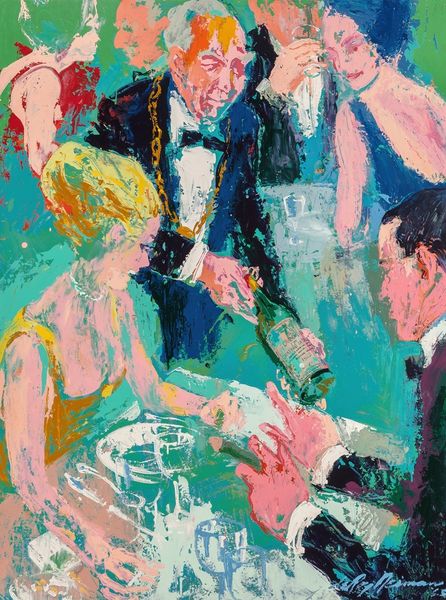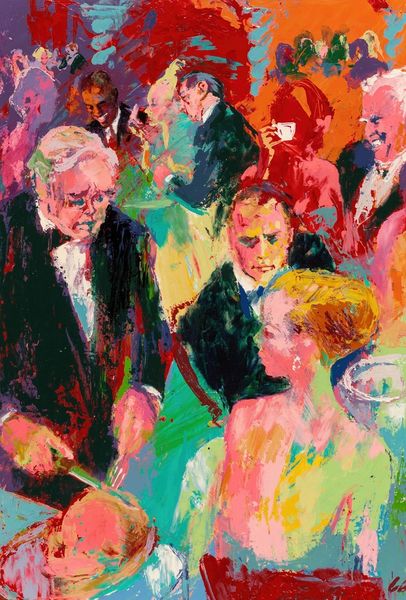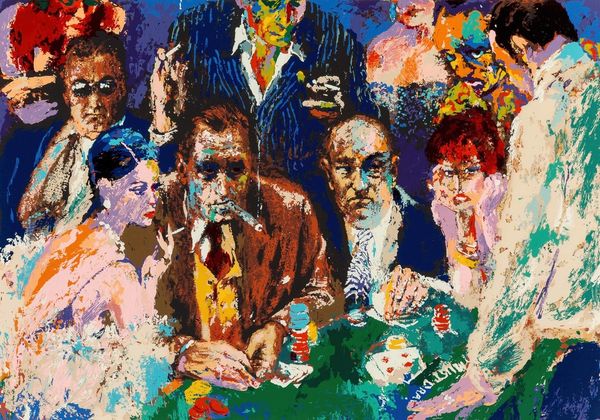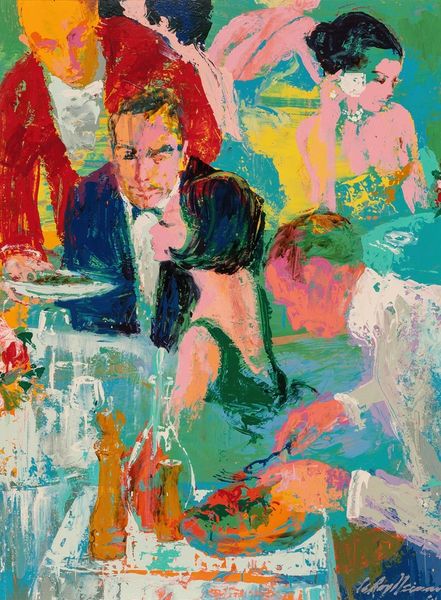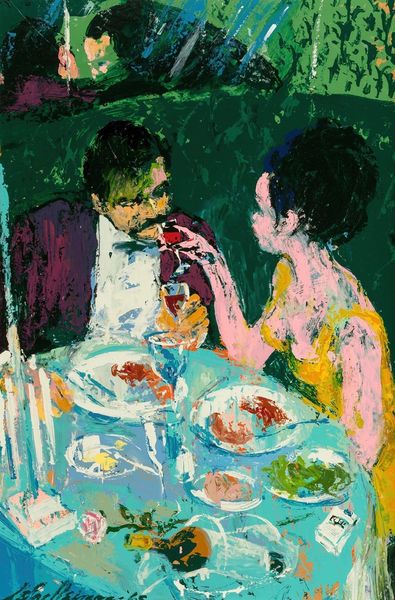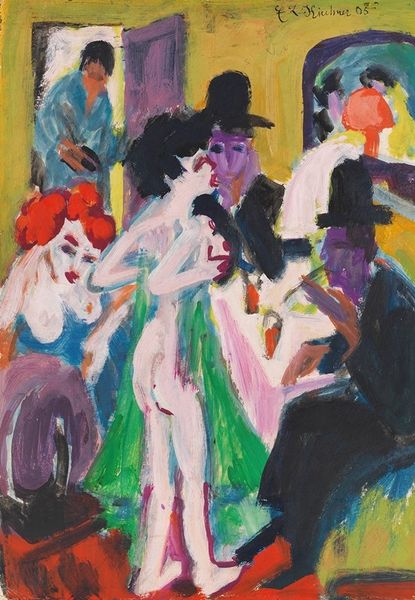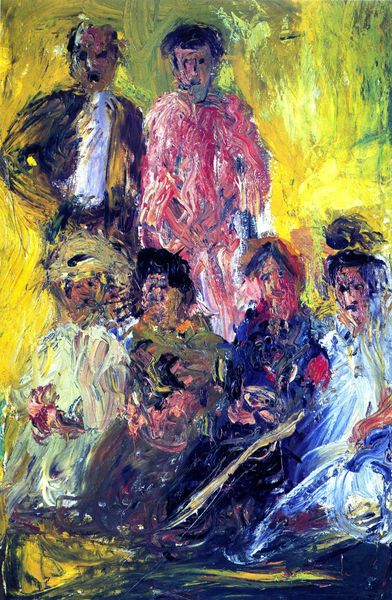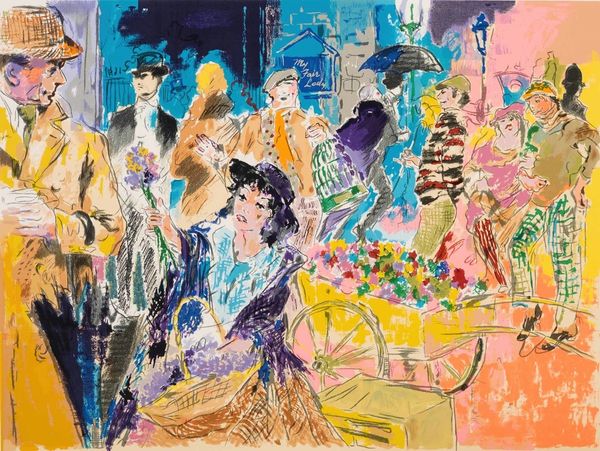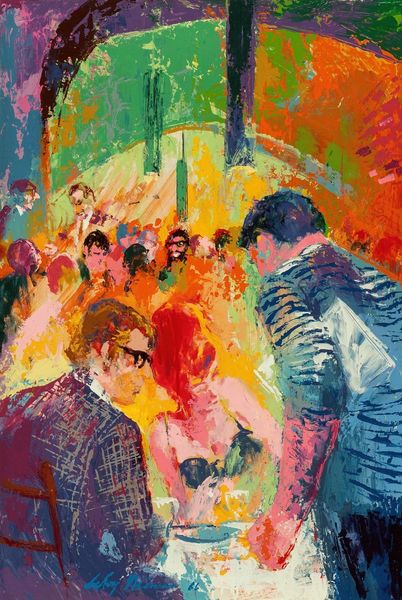
Copyright: Modern Artists: Artvee
Curator: This lively canvas is LeRoy Neiman’s "The Pickwick Club," created in 1966 using acrylic paint. Editor: The immediate feeling is opulent and somewhat frenetic; all those clashing bright colors overlaid in heavy brushstrokes. Curator: Absolutely, and considering its context, that frenetic energy might speak volumes. The mid-60s marked an important era of social change, challenging established power dynamics based on race, class, and gender. Knowing this work represents a club scene allows one to interpret it through critical lenses examining access and exclusion. Who had access to these spaces, and what was the cost of entry, socially and economically? Editor: The physicality of the paint itself suggests a kind of frenzy, almost an aggressive application. Looking at the brushwork, you can see the artist really working the material. Were these vibrant acrylic paints a conscious decision, pushing back against the more subdued tones traditionally associated with the upper classes? Curator: Quite possibly! This ties into the work's Expressionistic style; an emotional response to social dynamics. Also the Fauvist element, with those non-naturalistic colours used very intentionally and emotionally. Neiman certainly wasn't interested in portraying reality. Editor: True, the raw quality makes you consider what Neiman’s labor looked like. How fast did he need to work to capture this scene's immediacy? The energy expended becomes part of the piece's meaning, especially when considering these depictions of leisure. Is he critiquing, celebrating, or simply observing the production of privilege? Curator: All great questions, particularly when applied to the themes of genre-painting and figuration so clearly evident. Neiman situates these figures inside identifiable social scripts that would have immediately communicated particular expectations to the audience. Knowing the figures might belong to an elite circle pushes us to explore what sort of ideology the artist attempts to unpack here. Editor: Looking again, it strikes me that the chandeliers are just as heavily impastoed as the figures. It’s all surface; no deep insight perhaps, just an immediate reaction to the glittering textures of wealth. It does offer a kind of material commentary, making it clear that these leisure spaces are manufactured—constructed out of material and labor, just as the painting itself is. Curator: Ultimately, what fascinates me is how the piece embodies tension, offering both an engaging image and space for considering complex social narratives, prompting critical conversations relevant to our contemporary experiences with class and power. Editor: For me, it’s how the painting lays bare its own means of production—that really stays with me. You are very aware of the surface and the manipulation of the paint and texture into form, creating something alluring yet somewhat unsettling.
Comments
No comments
Be the first to comment and join the conversation on the ultimate creative platform.
